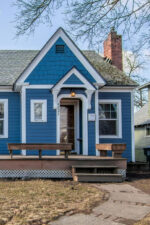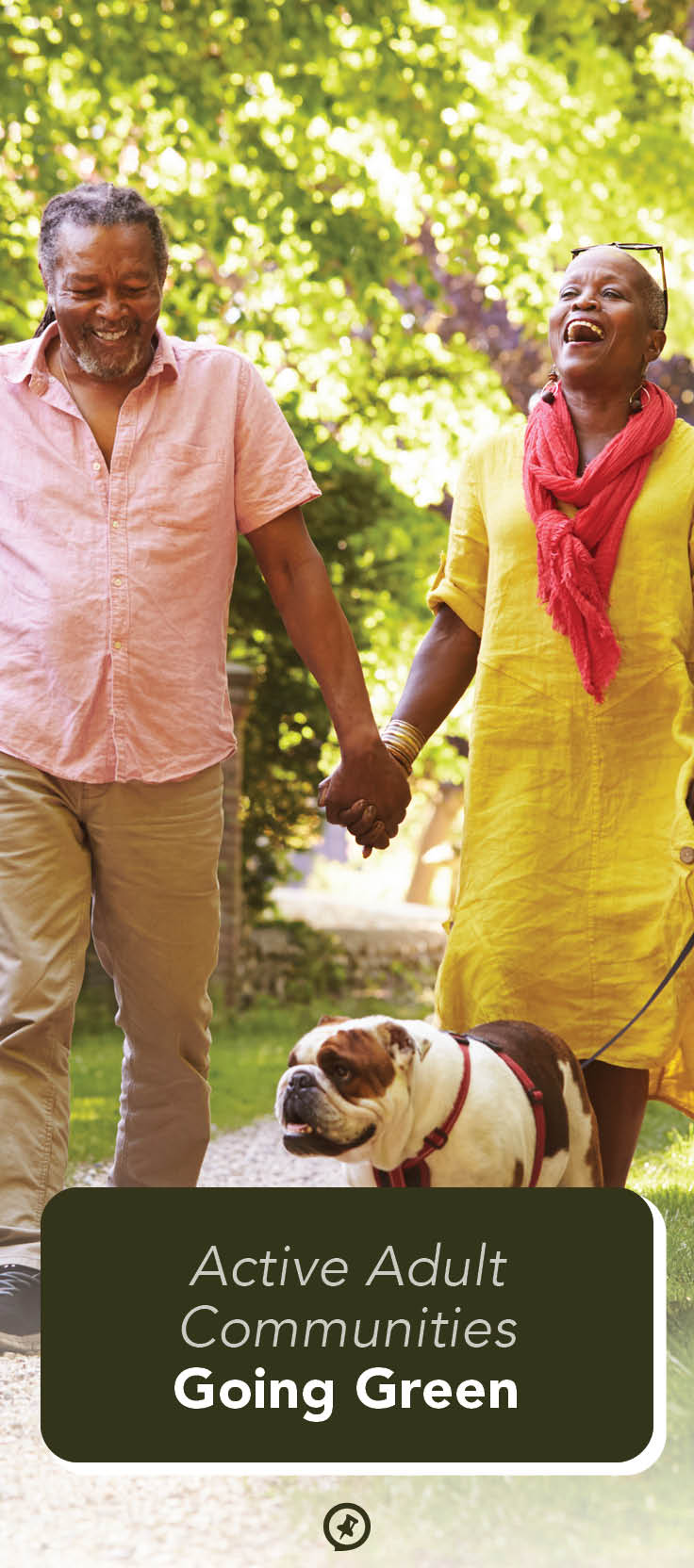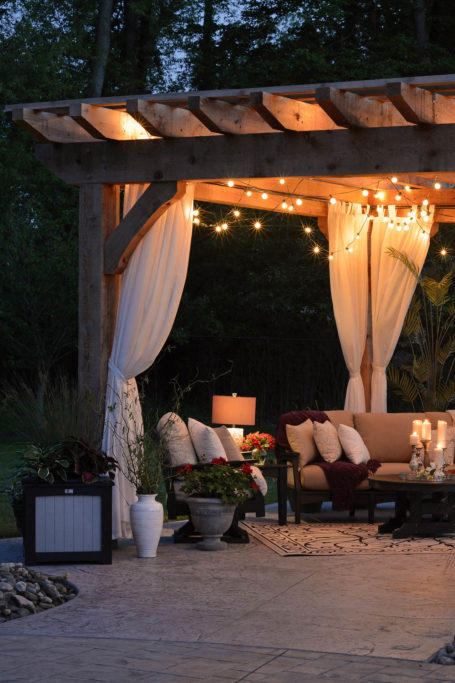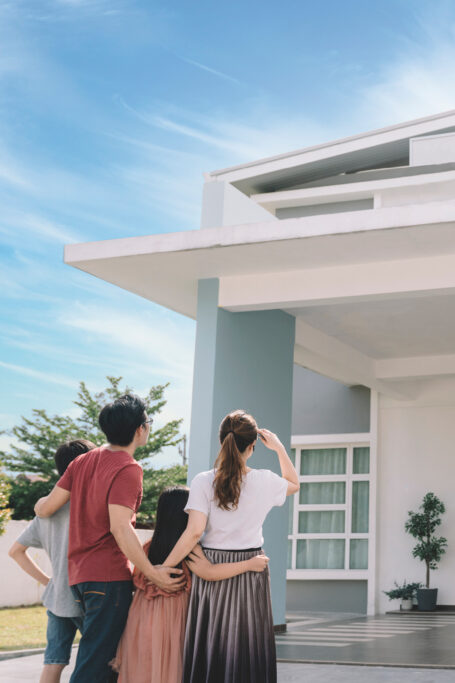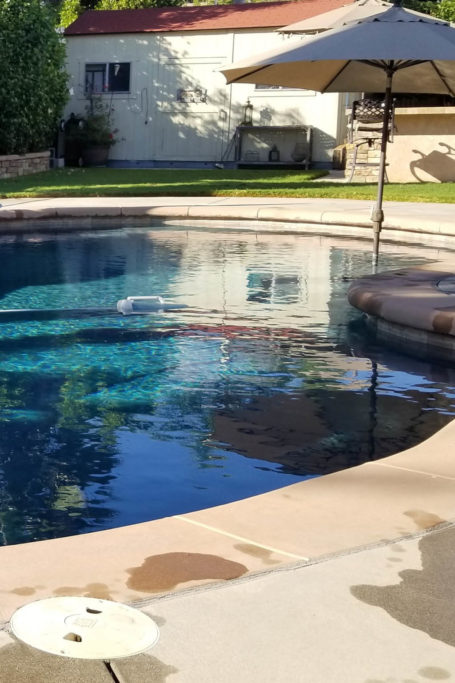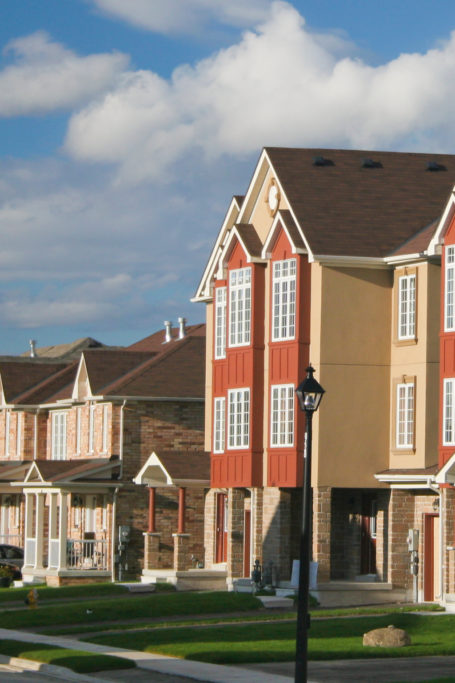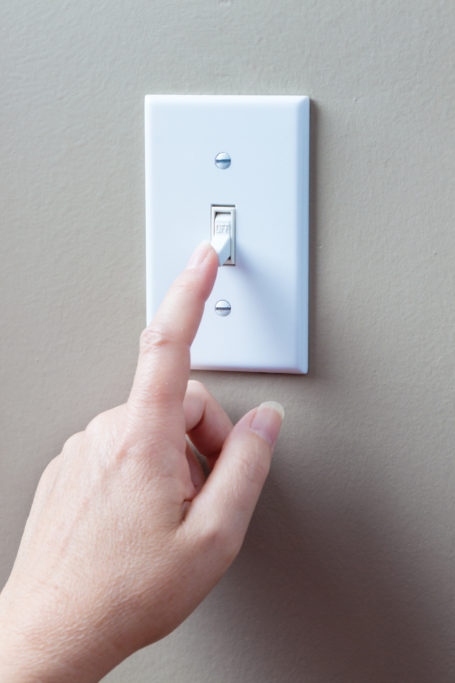Active Adult Communities Going Green
As the baby boomer generation ages into retirement, many are beginning to downsize with the goal of residing in an active adult community. But these communities aren’t just great for their residents but also for the environment.
Many of these communities are taking steps to become more eco-friendly, reducing their carbon footprint, creating a healthier environment for their residents, and enabling them to thrive for years to come.
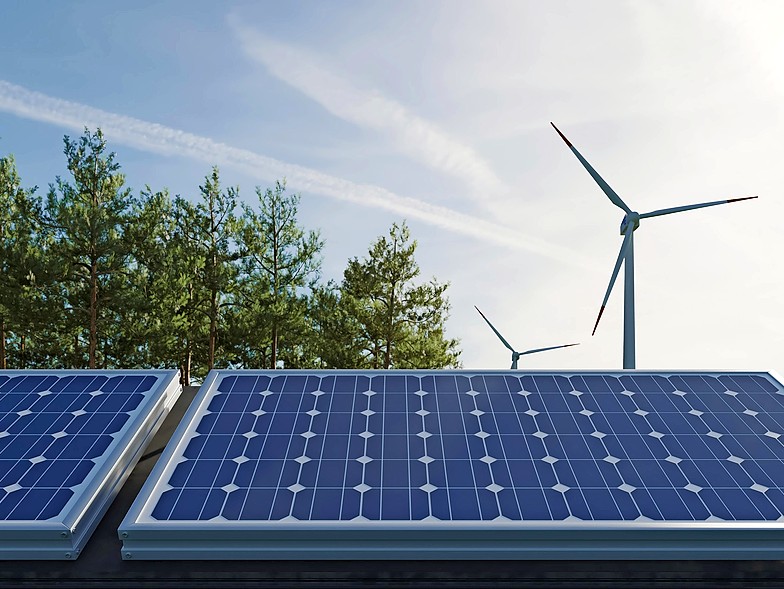
Infrastructure
For existing communities or those that are either in the process of being constructed or yet to be built, they are taking initiatives to ensure their facilities are as green as possible.
Renewable energy
Communities are employing various energy-saving strategies to meet the needs of their residents. This may include installing solar panels to reduce carbon emissions and lower electricity bills, water-saving measures, and energy-efficient lighting that reduces the amount of electricity used by 90 percent. Depending on the geographic location, they may also utilize geothermal energy that provides heating and cooling to buildings.
Building materials
Builders are working to create more eco-friendly communities by using recycled construction materials like wood, brick, plastic, and glass. They’re also incorporating local natural materials with a lower carbon footprint, including reclaimed wood, cork, and bamboo, and practicing new techniques such as creating concrete from recycled tire rubber.
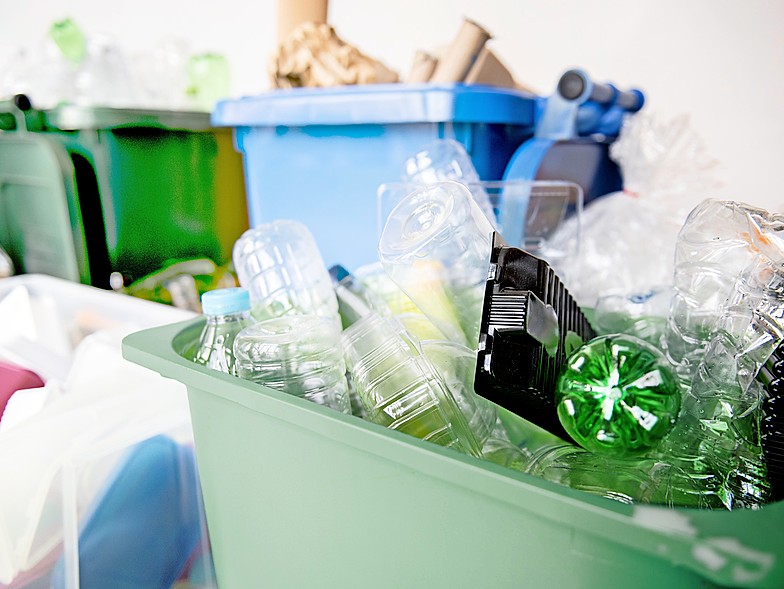
Programs
Beyond major infrastructure initiatives, many existing retirement communities are taking small steps toward being more eco-friendly by adding programs that focus on organic sustainability and encourage residents to become greener with their own habits.
Recycling practices
Residents have taken significant steps to reduce waste through their own initiatives like developing community gardens and recycling trash including furniture and other household items. They’re also creating innovative eco-friendly ideas to continually improve their living environment. For instance, leftover food may be composted which then gets donated to local and community gardens.
Resident education
Education at the community level is one of the most effective ways to show residents the financial, physical, and emotional advantages of living in a green environment. Through such education, individuals can adopt better practices into their daily lives while also participating in other green initiatives that their community promotes.
Transportation initiatives
Many green communities are urging their residents to opt for eco-friendly modes of transportation. This includes bike-sharing programs, which provide a sustainable and affordable mode of transportation for short distances; electric vehicles (EVs) that are cheaper to operate and cleaner than their gasoline and diesel counterparts (the cost to purchase an EV is expected to decline in 2023, making this option more affordable); and carpooling and ridesharing to reduce the number of trips made, and lower carbon emissions, traffic congestion, and noise pollution.
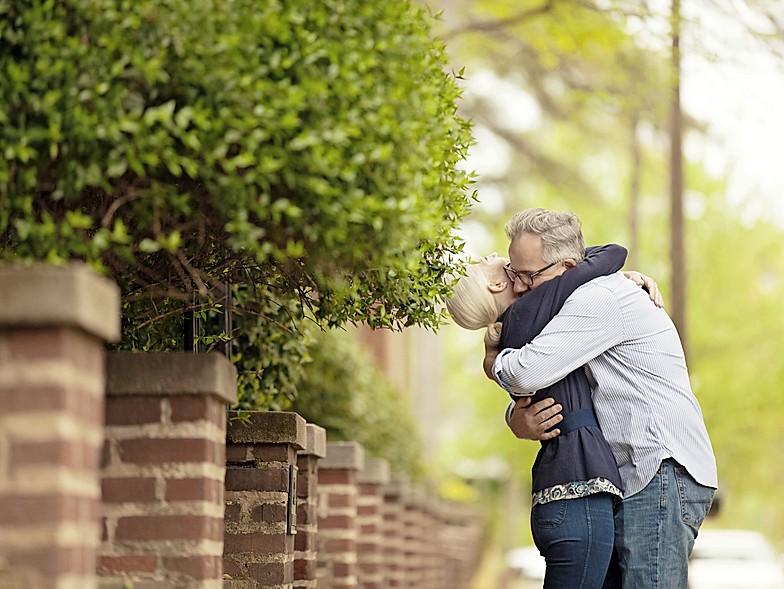
Benefits
In addition to helping the environment, there are many other advantages to living in a community that values sustainability.
Mental well-being
Active adult communities strive to build a sense of community and connection among their residents by offering programs and activities that foster both socialization and collaboration and advance their sustainability efforts. As a result, residents feel a sense of social responsibility by reducing their own carbon footprint and experiencing an overall improved quality of life. For example, communities participating in green spaces such as community gardens can lead to strong social relationships, higher cognitive function, and fewer cases of depression.
Physical health
According to the EPA, indoor air pollutants are often two to five times higher than outdoors, thanks to synthetic building materials, poor ventilation, and VOC paints. And because most people spend 90 percent of their time indoors, this can pose serious risks to individuals, particularly older adults who may suffer from respiratory or cardiovascular disease.
As active adult communities grow, they increasingly incorporate environmentally friendly building materials and practices that reduce the amount of indoor air pollution by limiting the use of toxic chemicals and providing improved ventilation. They also help create consistent room temperatures and a reduction in noise pollution.
Cost savings
For people who want to reduce their overall living costs, residing in a sustainable environment can help. For instance, if a community installs energy-efficient windows, energy-saving appliances, efficient lighting, cost-effective heating and cooling systems, low-flow faucets, and rainwater harvesting systems, it will reduce its monthly utility bills, creating cost savings, which can ultimately be passed on to its residents. Practices like green waste removal also reduces community expenses and maintenance costs.
If you’ve found an active adult community that you love but has yet to implement sustainable practices, this could be an excellent opportunity to take the lead and introduce some ideas to your community leaders. In addition, consider speaking to other residents to see if you can garner support and initiate eco-friendly initiatives of your own.


